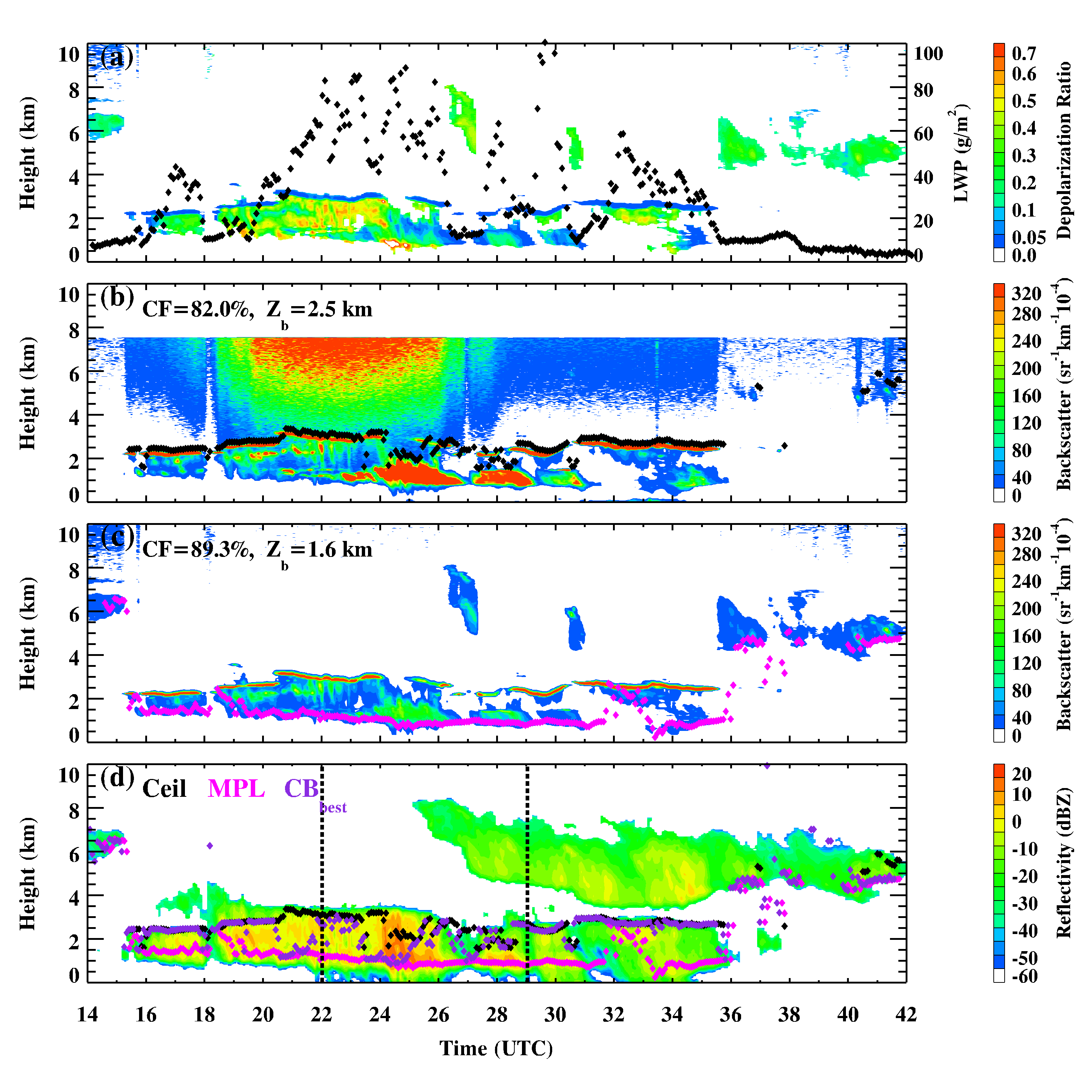Characterizing arctic mixed-phase cloud structure
Submitter:
Dong, Xiquan — University of Arizona
Area of research:
Cloud Distributions/Characterizations
Journal Reference:
Science
Previous studies reveal the unique structure of the Arctic Mixed-Phase Cloud (AMC) with a thin liquid-dominant layer at the top and ice particles developing into the lower layer. This unique feature can be clearly observed by radar reflectivity profiles and lidar backscatter profiles. Because of the different cloud base retrieval algorithms used among lidars, however, different layers within a single-layered AMC may be detected. In this study, we find that a standard ceilometer can detect the base of a liquid-dominant top layer within a single-layered AMC. On the other hand, a low-powered micropulse lidar (MPL), can detect the base of the ice-dominant bottom layer. With the combination of these two instruments, detailed AMC boundaries and vertical structures can be characterized and used to validate both model simulations of AMC and satellite observations.
Impact
We analyzed 3-years of ground-based observations at the ARM North Slope Alaska site and found that AMC should have two distinguished cloud base heights (CBHs) that can be defined by both ceilometer (black dots) and micropulse lidar (MPL; pink dots) measurements (Figure 1). For a single-layered AMC, the ceilometer-derived CBH represents the base of the liquid-dominant layer near the cloud top, while MPL-derived CBH represents the base of the lower ice-dominant layer. The annual mean CBHs from ceilometer and MPL measurements are 1.0 km and 0.6 km, respectively, with the largest difference (~1.0 km) occurring from December to March and the smallest difference in September.
Summary
AMC has an annual occurrence frequency of 42.3%, which includes 18.7% of single-layered AMCs and 23.6% for multiple layers. The humidity inversion occurrence decreases with increasing humidity inversion intensity (stronger in summer than in winter). During the winter months, AMC occurrences increase from 15% to 35% when the inversion intensity increases from 0.1 to 0.9 g/kg. On the contrary, despite a higher frequency of strong humidity inversion in summer, AMC occurrences are nearly invariant for different inversion intensities. On average, humidity and temperature inversion frequencies of occurrence above an AMC are 5 and 8 times, respectively, as high as those below an AMC. The strong inversion occurrences for both humidity and temperature above an AMC provide the moisture sources from above for the formation and maintenance of AMCs. This result helps to reconcile the persistency of AMCs even when the Arctic surface is covered by snow and ice.


